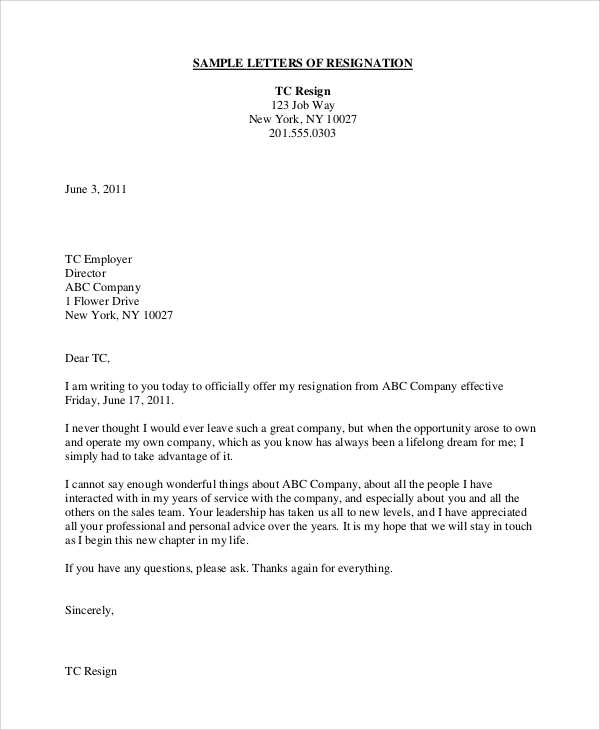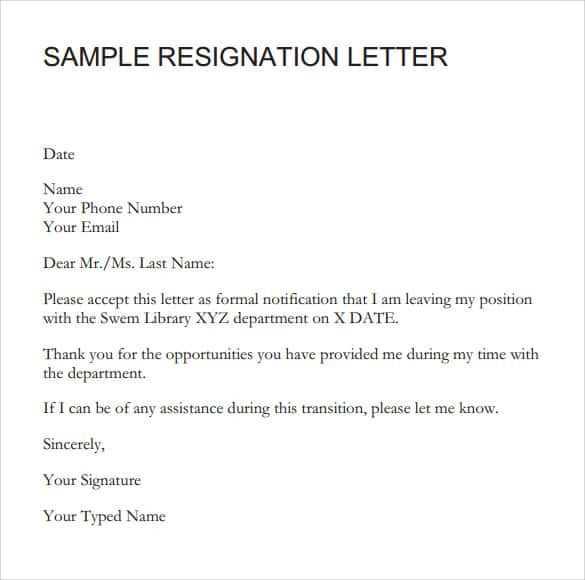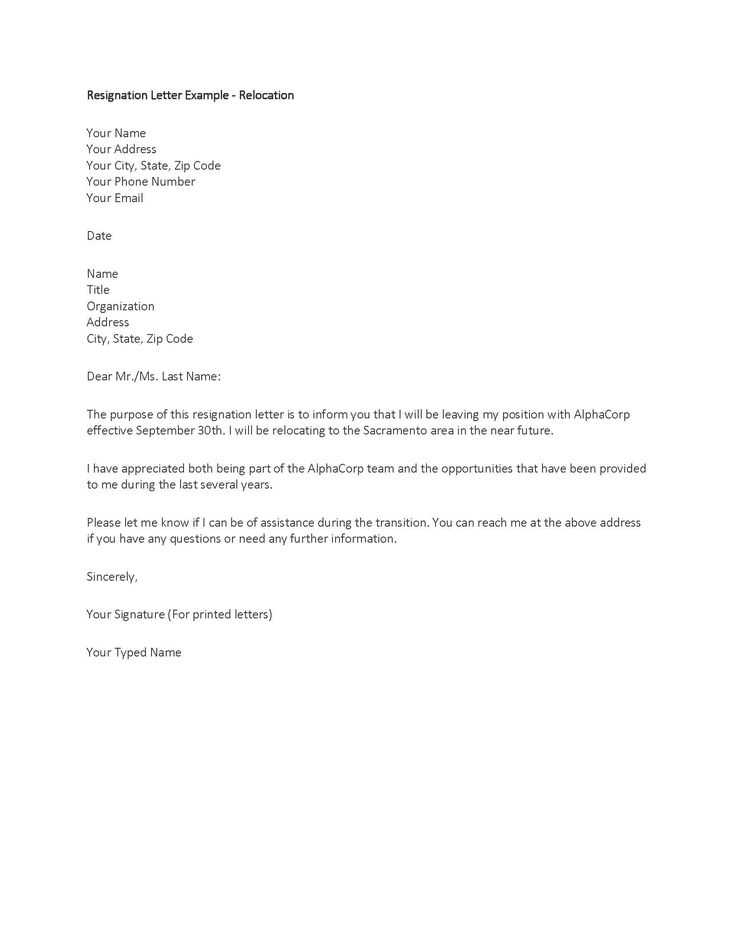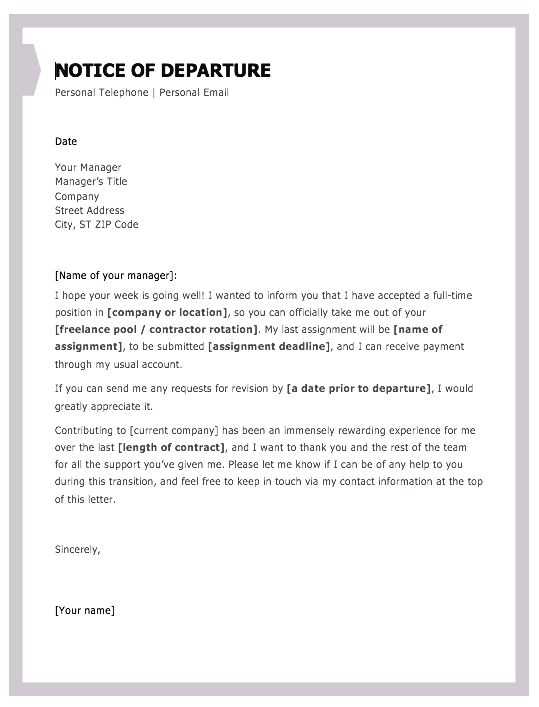Resignation Letter Example Template for Easy Use

When leaving a job, it’s essential to communicate your decision in a professional and respectful manner. Crafting a formal notification ensures a smooth transition and helps maintain positive relationships with your employer. A well-written notice is your chance to express gratitude while making it clear that you’re stepping away from your position.
Key Aspects to Include
Whether you’re moving on to a new opportunity or taking a break, certain points should always be covered in your correspondence. This includes informing your employer about your departure date, expressing appreciation for the experience, and offering assistance with the handover process.
Critical Elements
- Departure Date: Clearly state when you plan to leave the role.
- Reason (Optional): You may choose to mention why you’re leaving, though it’s not mandatory.
- Gratitude: Acknowledge the opportunity and experiences gained during your time at the company.
- Transition Help: Offer to help with the transition or to train a replacement if possible.
Tone and Language

The tone of your communication should remain courteous and professional. Avoid overly casual language or anything that could be seen as disrespectful. Focus on positivity and gratitude, even if your reasons for leaving are not entirely favorable.
Common Mistakes to Avoid
Many people make the mistake of being vague or leaving out important details, such as the specific date of departure. Others may use the notice as an opportunity to express dissatisfaction with the job, which can harm professional relationships. Keep it simple and direct to avoid misunderstandings.
Tips for Success
- Be clear and concise: Your communication should be to the point.
- Maintain professionalism: Regardless of your reasons for leaving, always keep the tone respectful.
- Follow up: After submitting your formal notification, ensure you follow up with the necessary next steps for a smooth handover.
Understanding the Value of a Formal Departure Notification

When it comes to ending your tenure at a company, clear communication is vital. Properly conveying your decision allows you to exit gracefully, leaving behind a positive impression. A well-thought-out message can also ensure a smooth transition and maintain professional relationships for future opportunities.
Key Details to Include
To make your message effective, certain elements should be addressed. Start by specifying the final date of your time with the company, and express appreciation for the experiences gained. It’s also a good practice to offer assistance with any transitions that may be necessary for the team or the organization.
Maintaining Professionalism During the Transition
While it’s essential to communicate your departure, the tone of your message should remain respectful and diplomatic. Avoid using this as an opportunity to air grievances or express dissatisfaction. Maintaining a professional demeanor ensures that you leave on good terms, preserving valuable connections within the industry.
Common Pitfalls to Avoid
One common mistake is failing to mention important details, like the exact date you intend to depart. Being vague or overly emotional can also lead to misunderstandings or an unprofessional impression. Keep your message succinct and focused on the necessary points to avoid these issues.
Crafting a Clear and Effective Statement

Clarity is essential in any formal communication. Be concise, direct, and positive. Avoid unnecessary elaboration and keep the message straightforward, ensuring the recipient understands your intentions and next steps without confusion.
Different Approaches to Crafting a Formal Notification
There are various ways to structure your message, depending on the nature of your departure and the relationship you have with your employer. Whether a brief, to-the-point note or a more detailed explanation, choosing the right format ensures that your communication aligns with the situation and leaves a lasting, professional impression.